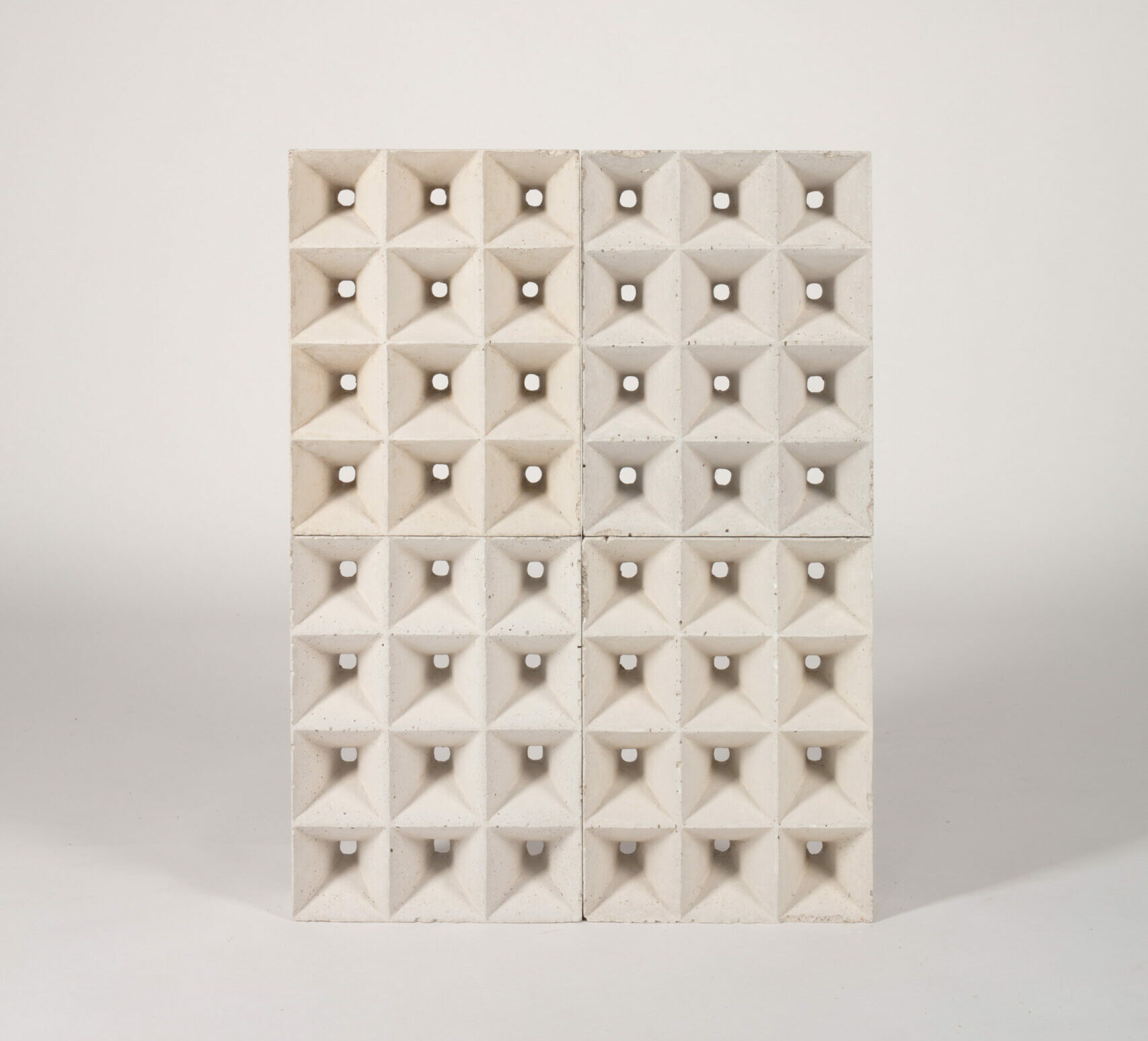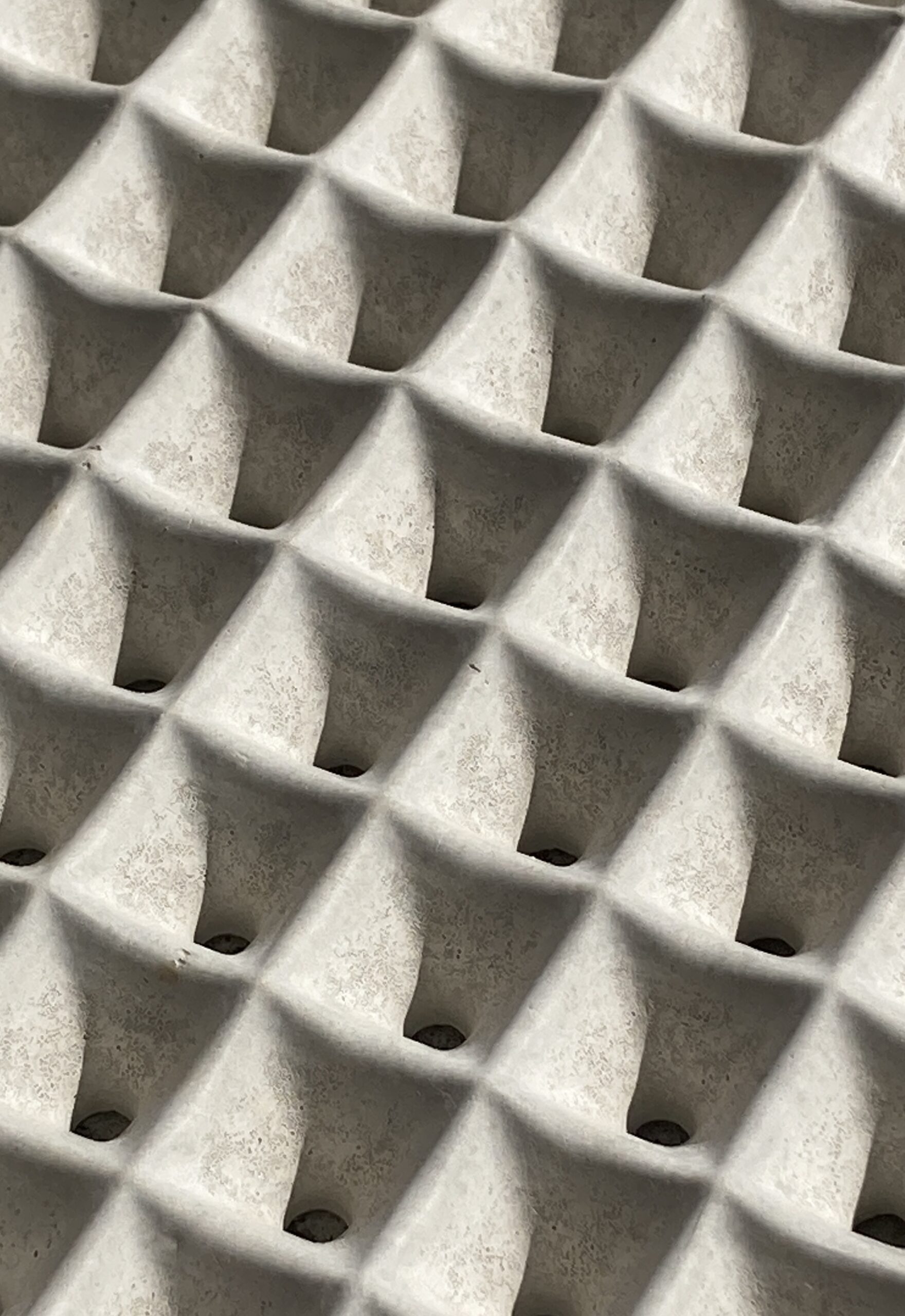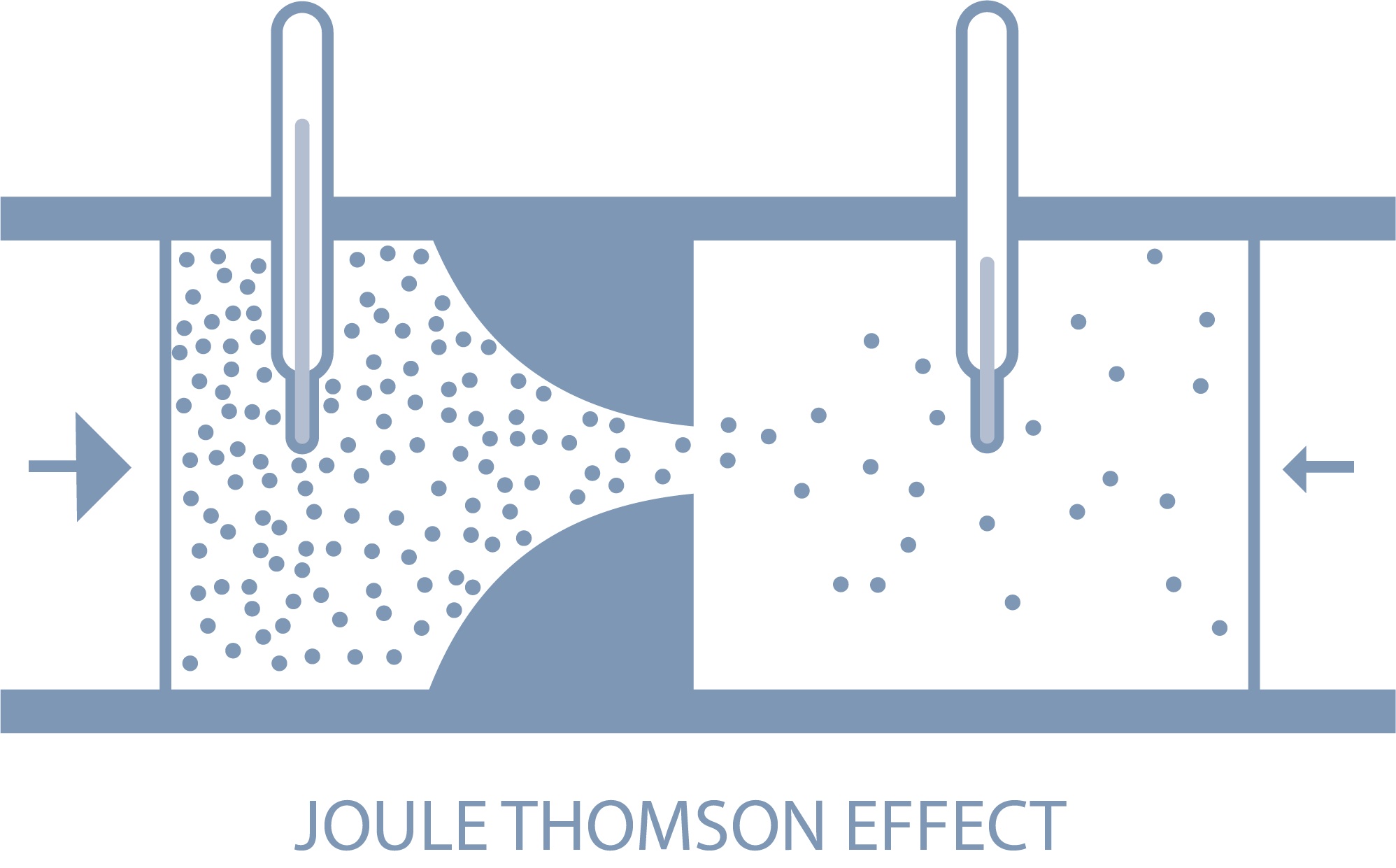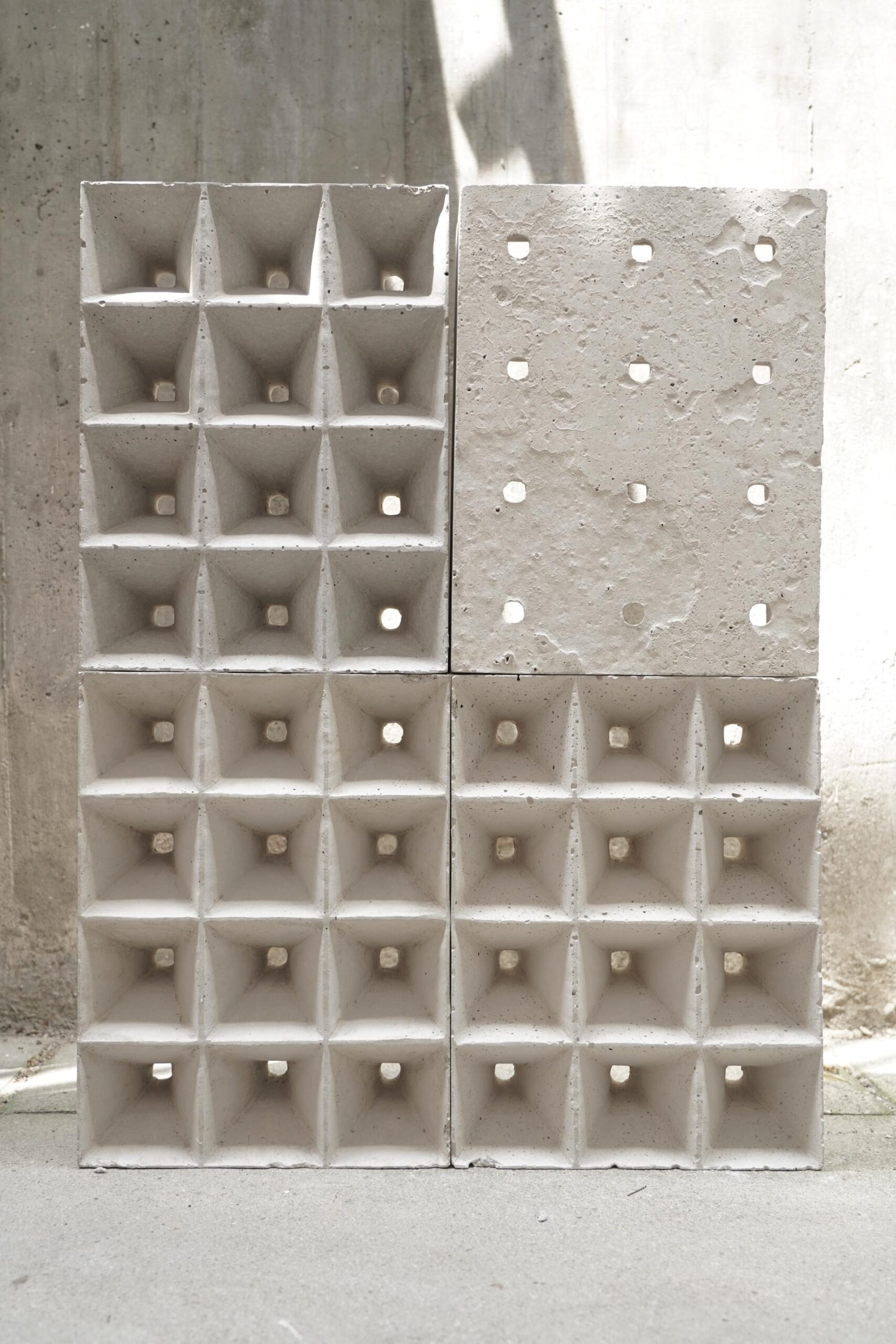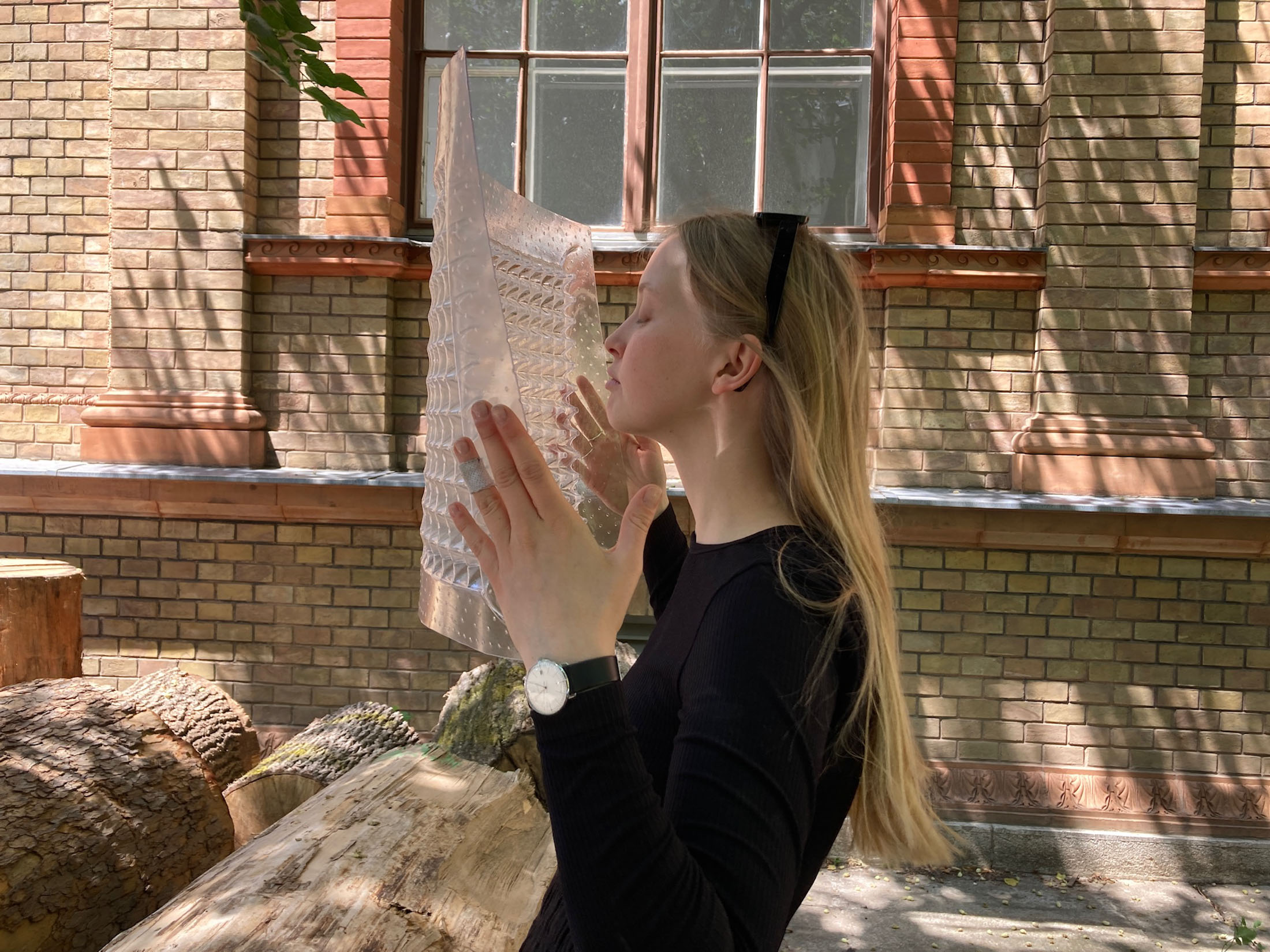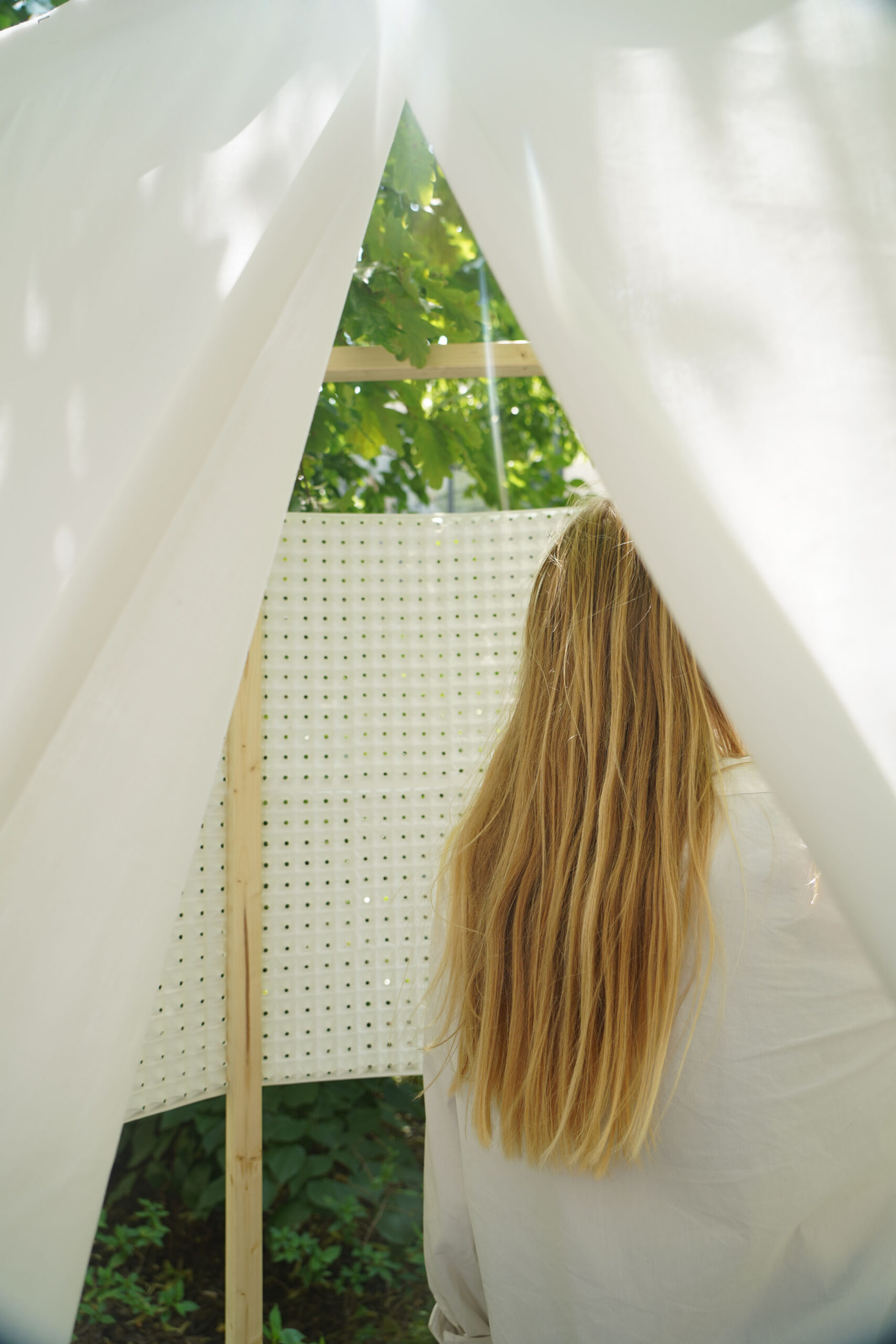cooldown by Emilie Karaskova and Sofia Kocher
The ‘Cooldown’ structure works with natural air flow in order to cool air in the most energy-efficient way. To achieve a passive way of cooling, we focused on physics and aerodynamics. We see high potential in the usage of this structure as a second skin facade for buildings in European cities like Vienna.
Who Our cooling solution is meant to ensure the wellbeing of residents of European cities in the face of increasing temperatures.
Why As global temperatures continue to rise, cities in Europe are facing increasing challenges in managing extreme heat waves. In recent years, many urban areas have experienced record-breaking temperatures. This makes finding new and effective ways to cool cities a top priority for governments and urban planners.
How We used the Joule-Thomson effect which works with compression and rapid expansion of air and with the difference of pressure in certain spaces. We also developed a shape that enhances the described physical effect and other aerodynamic principles. This effect is normally used in fridges. We wanted to break the effect down to its nature so that no energy is needed and it works with a natural source like wind. Testing the effect ourselves, we tried to figure out how to get the best results. We built a simple testing station with hairdryers, thermostats and an anemometer to explore how different elements influence the effect and came to some general results: the bigger the structure, the better the effect works. The higher the temperature in the beginning, the bigger the difference in the end. The more pressure applied, the better are the results. Under artificial circumstances we achieved a temperature change of over 13 degrees. However, as wind is not constant, these results can‘t just be implemented into real life.
Where The structure should be placed in front of already existing facades to cool them down in hot weather. This second skin facade acts as a thermal mass and also creates shading, while also actively cooling down air passing through. As the wind enhances the effect, windy areas are ideal.
